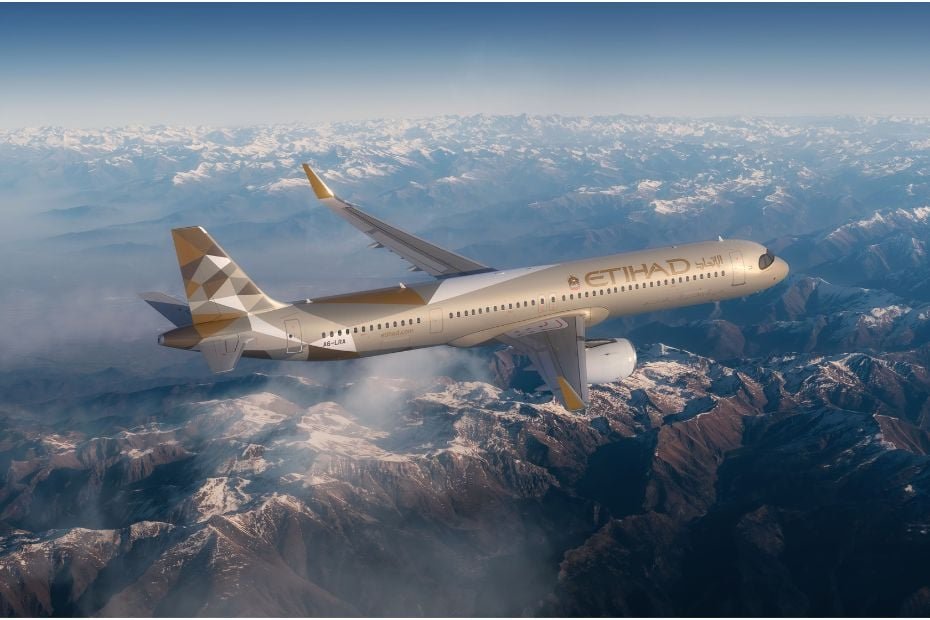
Image credit: WAM/Website
Antonoaldo Neves, Chief Executive Officer of Etihad Airways, has unveiled ambitious plans for the airline’s growth in 2025, targeting approximately 21.5 million passengers by the end of the year, more than double the number recorded in 2022.
Read-Flying Etihad? Know about these latest developments
Speaking with the Emirates News Agency (WAM), Neves outlined how this growth will be supported by a significant fleet expansion. The airline expects to receive 18 new aircraft by the end of the year, with two already added to the fleet and 16 more scheduled for delivery in the coming months. Having transported over 10 million passengers during the first half of the year, Etihad is on track to close 2025 with a fleet size between 115 and 120 aircraft.
Fleet expansion and financial growth drive ambitious targets
Neves highlighted the airline’s impressive financial trajectory in recent years. Etihad Airways reached financial break-even in 2022, achieved a profit margin of 3 percent in 2023, and increased this to approximately 6 percent last year. This year, the company expects profit margins to rise further to between 7 and 8 percent.
“Our strategy is focused on gradually expanding margins each year,” Neves said. “We are funding our growth through internal cash flows, which contributes to sustainable financial performance.”
The planned fleet expansion plays a critical role in this strategy. Neves also addressed operational challenges, noting that the airline anticipated delays in aircraft delivery from manufacturers. To maintain growth momentum, Etihad accelerated the induction of leased aircraft and reintroduced seven A380 aircraft into service.
The airline is gearing up for an even larger expansion in the coming years. Zayed International Airport in Abu Dhabi, Etihad’s hub, is well-equipped to support this growth. Neves revealed plans to grow the fleet to around 200 aircraft and serve between 38 and 39 million passengers by 2030—effectively doubling the company’s size over the next five years.
Strengthening global network and market presence
Etihad’s growth strategy extends beyond fleet expansion to enhancing its global network. The airline currently flies to nearly 100 destinations worldwide. However, Neves emphasized that growth isn’t only about adding new routes, but also increasing flight frequencies on existing routes to meet rising demand.
For instance, flights to Frankfurt and Barcelona have doubled to twice daily, while Bangkok now receives five daily flights during peak periods. Around two-thirds of the additional capacity is allocated to existing destinations, with only one-third targeting new markets.
New routes are also expanding. Atlanta began with five weekly flights and now operates daily service, while New York has increased from one daily flight 18 months ago to two today. Western destinations are now all served with daily flights, reflecting Etihad’s commitment to deepening its market position.
Looking ahead to 2030, the airline will focus on markets within a four-hour flight radius from Abu Dhabi, including India, Pakistan, and the Middle East. Etihad operates four daily flights to key destinations such as Colombo, Riyadh, Jeddah, Mumbai, and Muscat. The airline aims to offer at least two daily flights to all its destinations across Southeast Asia, Europe, and the eastern United States.
Neves also revealed a significant milestone: Etihad will soon take delivery of its first A321 Long Range aircraft, arriving this week in Hamburg. This narrow-body aircraft will be the first in the fleet to feature a first-class cabin with fully flat luxury seats, a “world’s best travel experience on a narrow-body aircraft,” according to Neves. This move marks a redefinition of regional travel standards for the airline.
Abu Dhabi’s growth fuels airline expansion
Neves praised Abu Dhabi’s rapid development as a major driver behind Etihad’s growth. The capital city’s population is increasing at an annual rate of 7 per cent, five to six times the global average, which is boosting demand for travel and services.
International events, exhibitions, conferences, and the expanding tourism and cultural sectors in Abu Dhabi are further stimulating travel to and from the capital.
“We have doubled our flight capacity in Abu Dhabi in just two and a half years,” Neves said. “This positions us as a major contributor to the city’s development, while also benefiting significantly from government investment in infrastructure and tourism.”
He concluded by underscoring Etihad’s vision for the future. The airline is now more agile and better positioned to respond to shifting market dynamics as it pursues its goal of becoming the preferred airline for travelers worldwide by offering exceptional service, flexibility, and smart expansion.

